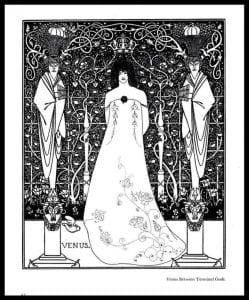A Century of Change
During Friday’s class, we began looking into the nineteenth century, and how it changed rapidly the way in which technology advanced, and how it would change the world of technology forever. For example, Thomas Edison invented the Phonograph and the first long-lasting bulb from 1877-1879, Karl Benz invented the first practical automobile in 1885, and Emile Berliner invented the Gramophone in 1887, the foundations of which all of these are essentially the same technology in which we still use today.
The first instance of photography was invented in 1826, when Joseph Niépce took a photograph of a view from a window in France:
‘View from the Window at Le Gras’
The first instance of moving pictures took place in the late 1880’s, with the invention of the first moving film. Nowadays, film has become one of the most relied upon types of media for entertainment. The very first attempts of trying to capture movement in an image can be traced back all the way to Palaeolithic cave paintings.
The industrial revolution changed everything, including the surfacing of graphic design in culture. People were beginning to move from an agricultural-based to a more city-based industry. More and more, the public were relying on newspapers and posters for their source of news, to learn about what was happening in the world. Job seekers moved to cities looking for work with the birth of the printing industry.
Japonism
The term ‘Japonism’ refers to the 19th Century European craze for Japanese art. The type of traditional Japanese printmaking had a significant influence on modern art throughout Western Europe at the time, and served as a large source of inspiration for movements such as Impressionism, Post-Impressionism and Art Nouveau.
Before the introduction of Japonism, artists mainly relied on the style of Realism. This style contained staged, stiff figures, with little to no energy, in comparison to Japanese art at the time, which were colourful and vibrant, and had a sense of being alive.
‘The Meeting’ by Gustave Courbet (1854)
‘The Great Wave off Kanagawa’ by Hokusai (1829-32)
Artists began taking influence from this style of work, and art became much looser and colourful. For example, Claude Monet’s paintings took great inspiration from the Japonism style, where he uses bright, vibrant colours, long strokes and less realistic figures and scenes. It became more about the feeling of a piece, rather than what was actually there.
‘The Water Lily Pond’ by Claude Monet (1914-17)
Arts and Crafts Movement
The Arts and Crafts Movement began during the industrial revolution, but was seen as an anti-industrial revolutionist movement. It was a search for aesthetic design, a reaction against the designs that were developed by machine production. Arts and crafts were simple in form, but emphasised the qualities in the materials used, and patterns were influenced by Traditional British Flora or British countryside. Old techniques were being revived, using bold forms and strong colours based on Medieval designs.
William Morris was an English textile artist, poet, novelist, printer, and socialist activist, who was one of the leading figures of the Arts and Crafts Movement, but he was best known for his distinctive textile designs. He helped establish the modern fantasy genre, influencing authors such as JRR Tolkien for ‘The Lord of the Rings’ and ‘The Hobbit’. He was also the founder of the Kelmscott Press, which allowed him to publish high quality books. This brought an influence to the revival of the private press, bringing the quality back to printing that the industrial age was losing.
Art Nouveau
Art Nouveau was a movement of art taking place between around 1890 and 1910, throughout Europe and the US. The movement is characterised by its use of long, organic lines, and was used in a variety of ways and styles such as architecture, interior design, jewellery making, posters, graphic design and illustration. The movement took its main inspiration from natural forms and nature and imported Japanese arts and crafts. Artists associated with the Art Nouveau movement included Aubrey Beardsley and Alphonse Mucha.
Aubrey Beardsley
Alphonse Mucha
I think it is important to realise how far we have come in terms of technological advances and design, but how the foundations of design stay the same throughout history – the desire to appeal to the viewer, and to look aesthetically pleasing. This lesson has shown me a variety of changes throughout art history, going all the way back to Prehistoric times and paintings, but it was clear then that humans still had the same thing in mind – to capture what was there.












